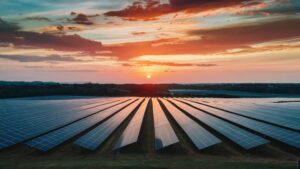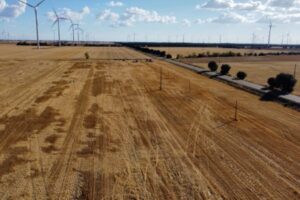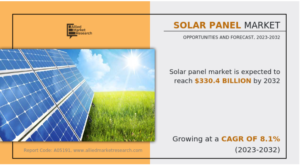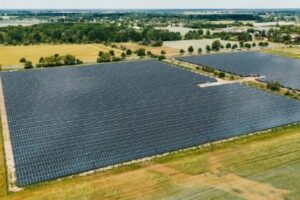Too strict or not enough? | Draft guidance for US clean hydrogen production tax credit draws tens of thousands of comments

The US Treasury’s draft guidance for the 45V clean hydrogen production tax credit closed for comment yesterday, with almost 30,000 responses sent in from industry, environmental groups, and private citizens.
The sheer volume of comments could potentially increase the time needed to finalise these long-awaited regulations, which will determine the rules by which projects would be eligible for the 2022 Inflation Reduction Act’s (IRA) tax credit of up to $3/kg of hydrogen produced.
The draft guidance, published in December after months of delay, includes controversial requirements for clean hydrogen projects to source zero-carbon electricity from assets brought on line within three years of the plant (so-called “additionality”) and in the same geographic region, in order to ensure that renewable energy already on the grid is not replaced by fossil-fuel-fired power.
Additionally, clean hydrogen producers have to prove that they have consumed the same amount of zero-carbon power as has been consumed for H2 production— so-called “temporal matching” — on an annual basis up to 1 January 2028, when the rules switch to hourly matching. This is to ensure that electrolysers do not use clean grid electricity that will need to replaced by additional fossil-fuel power.
The Treasury also sought comment on adding in potential loopholes, such as a 5-10% allowance for existing clean energy to power electrolysers or “avoided retirements”, ie, zero-carbon power plants that would have shut down if not for the new revenue stream of hydrogen production.
Supportive comments
US non-profit the Natural Resources Defense Council (NRDC) praises the “three pillars” approach of adding guardrails to the power supply of green hydrogen projects, noting that the Treasury is “statutorily required to consider significant indirect emissions from hydrogen production, which are predominantly induced grid emissions in the case of electrolytic hydrogen production”.
Article continues below the advert
It adds that weakening these regulations would go against the climate principles of the Inflation Reduction Act, noting that critics of these rules fail to adequately explain how allowing grid electricity to be drawn for electrolysers would be consistent with emissions reduction.
However, the NRDC calls against the broad-brush exemption for 5-10% of power supply to come from existing sources, citing modelling from Rhodium Group, Energy Innovation and the Princeton ZERO Lab, which all found that this would massively drive up emissions.
Energy Innovation calculated that hydrogen production in California using this 5-10% carveout would not only result in a carbon intensity four to five times higher than the threshold for clean hydrogen of 4kgCO2/kgH2, but would actually be 1.5 to two times higher than existing grey hydrogen production.
The International Council on Clean Transportation (ICCT) also strongly supports the proposed restrictions on renewable power supply, arguing in its comment: “For hourly matching requirements to be most effective, we recommend they apply consistently to all electrolysis hydrogen producers without grandfathering once implemented.”
The ICCT also notes that the US could introduce monthly matching prior to 2028, which would match EU regulations.
Unlike the EU’s Delegated Acts — which require the use of renewable energy — the Treasury guidance does not specify that the power must be generated from renewables, potentially allowing for the use of nuclear or fossil fuel-fired generators retrofitted with carbon capture and storage (CCS) technology.
Julie McNamara, deputy policy director at the Union of Concerned Scientists (UCS), in her comment on behalf of the organisation, which also supports the three pillars approach, warns that CCS should be specifically excluded in the final guidance.
She argues that carbon capture facilities should be treated as having variable carbon intensity over time with strict measurements for the final fate of the captured CO2, “making it critical that [energy attribute certificates (EACs)] are assigned per hour as opposed to generically based on expected or even average facility performance”.
“However, no such accounting and tracking mechanisms currently exist, meaning Treasury presently cannot allow use of EACs from fossil fuel-fired facilities using carbon capture systems,” she adds.
Critical comments from both sides of the aisle
The Treasury Department’s proposed guidelines have seen significant political pushback, particularly from representatives of regions where meeting the three pillars could be difficult.
“The final guidance must be technology-neutral to allow for the rapid buildout of this industry,” West Virginia’s Republican senator, Shelley Moore Capito, writes in her letter to the Treasury.
“Failure to do so will undermine the viability of the hydrogen industry — regardless of an individual project’s production method — could cost communities across the country tens of thousands of existing and potential jobs, and orphan billions in taxpayer dollars already dedicated to regional hydrogen hubs.”
She raises that requirements for power supply from renewable electricity would preclude blue hydrogen projects in states such as West Virginia from accessing the tax credit, even though the region had already been selected for nearly a billion dollars in federal funding via the ARCH2 hub.
All seven of the Regional Clean Hydrogen Hubs, earmarked for $7bn in total funding, have signed a joint letter to Treasury Secretary Janet Yellen expressing concern that the guidance would hold back $40bn in planned investment as many projects would no longer be economically viable, noting that “specific impacts vary” by each hub.
Joseph D. Morelle, a Democratic congressman from New York state, comments that in addition to the regulations penalising first-movers in the industry, they could also disincentivise investment into certain states that do not have the capacity to build out more clean baseload power.
“There has only been one nuclear reactor deployed within the last three years in the United States and Upstate New York fully developed its hydroelectric resources decades ago. In my view, punishing the first regions to invest in clean energy like nuclear and hydropower would contradict our congressional intent during the passage of the IRA.”
Critical comments from the industry
Industry voices have also called for changes to the guidance.
“The proposed regulations will adversely impact many hydrogen production projects and possibly kills several projects that are in early phases across the US,” warns Japanese industrial gases firm Iwatani’s American subsidiary.
The company specifically points to hourly matching and regional restrictions for zero-carbon power supply as likely to “significantly increase the cost of clean hydrogen production such that the goals of the Inflation Reduction Act (IRA) through Clean Hydrogen Production Credit [sic] cannot be achieved”.
The Renewable Hydrogen Alliance (RHA), an Oregon-based trade association, adds that the draft rules will “stifle the clean electrolytic hydrogen sector and may cause a failure to launch the industry, thereby maintaining the status quo of our country’s reliance on dirty electricity generation, dirty transportation fuels and dirty industrial heat processes”.
The association notes that in addition to the draft rules only looking at emissions from hydrogen production, without addressing avoided emissions from displacement of fossil fuels once in use, the Environmental Protection Agency has yet to analyse lifecycle greenhouse emissions from H2 production.
“Treasury is developing some of the most consequential tax rules using assumptions plugged into data models based on a clean hydrogen sector that doesn’t yet exist,” it warns.
The RHA calls for a waiver on additionality and temporal matching rules if the hydrogen project is sited in a state with clean energy or climate mandates that would already drive grid decarbonisation, or if construction on the facility begins before 1 January 2033 (the year the tax credit is set to expire), or if it is 5MW or less in size.
The association also argues against regional restrictions on electricity supply, noting that the Pacific Northwest already imports Canadian hydropower subject to a trade agreement.
“For purposes of raising awareness, RHA and other stakeholders in the Pacific Northwest are concerned that any attempt to modify, restrict, or “discriminate” against Canadian hydropower serving a specific load in the US such as electrolysis, ie, through stringent requirements of incrementality, temporal matching and deliverability, or Canada’s ability to market hydropower to the US under the terms of the Treaty, runs the risk of negatively impacting current negotiations and/or future co-ordination on highly beneficial power supply between the two nations,” the RHA writes.
US electrolyser maker Plug Power was also critical of the proposed regulations, the potential for extra grid emissions from hydrogen production as “a speculative theory”.
“The burdens imposed by this trio of restrictions will drastically stunt the growth of the clean hydrogen industry and prevent many promising projects from ever getting off the ground,” it said in its comments.
Plug points out that the US guidance for clean hydrogen production would calculate annual emissions from all H2 produced at a facility, regardless of which volumes the producer would actually claim the tax credit on.
This could be seen as stricter than in the EU, which in its pilot auction for green hydrogen subsidies allowed bids to be split based on the expected proportion of time an electrolyser would be producing H2 that complies with the delegated acts.
Plug calls for grandfathering clauses, specifically requesting that any projects built before the end of 2026 should be eligible for the tax credit even if they draw on existing clean power from the grid, as well as carve-outs for the use of existing clean baseload power such as nuclear and hydro.
Some companies have not publicly filed comments on the draft guidance, but have raised their concerns in analyst calls or the media that these regulations will also discourage so-called “pink” hydrogen from nuclear power and “blue” hydrogen from natural gas with carbon capture.
ExxonMobil last week suggested that it could scrap plans for a billion-cubic-foot-per-day blue hydrogen project at its Baytown refinery, as current regulations would limit it to only claim the lowest tier of the 45V.
Meanwhile, nuclear power station operator Constellation warned last year that it would shelve plans for pink hydrogen production over the strict guidance, given that additionality would be almost impossible to achieve.
Recent reporting by E&E News suggests that companies could be gearing up for legal challenges to the guidance, particularly given that the combative US Supreme Court could soon roll back the so-called “Chevron deference” — a legal precedent that courts should side with federal agencies’ definitions or interpretations of ambiguous legislation.
A public hearing on the hydrogen production tax credit regulations has already been scheduled for 25 March, with submissions for testimony due by 4 March.
However, no dates have been set for when the rules might be finalised.






